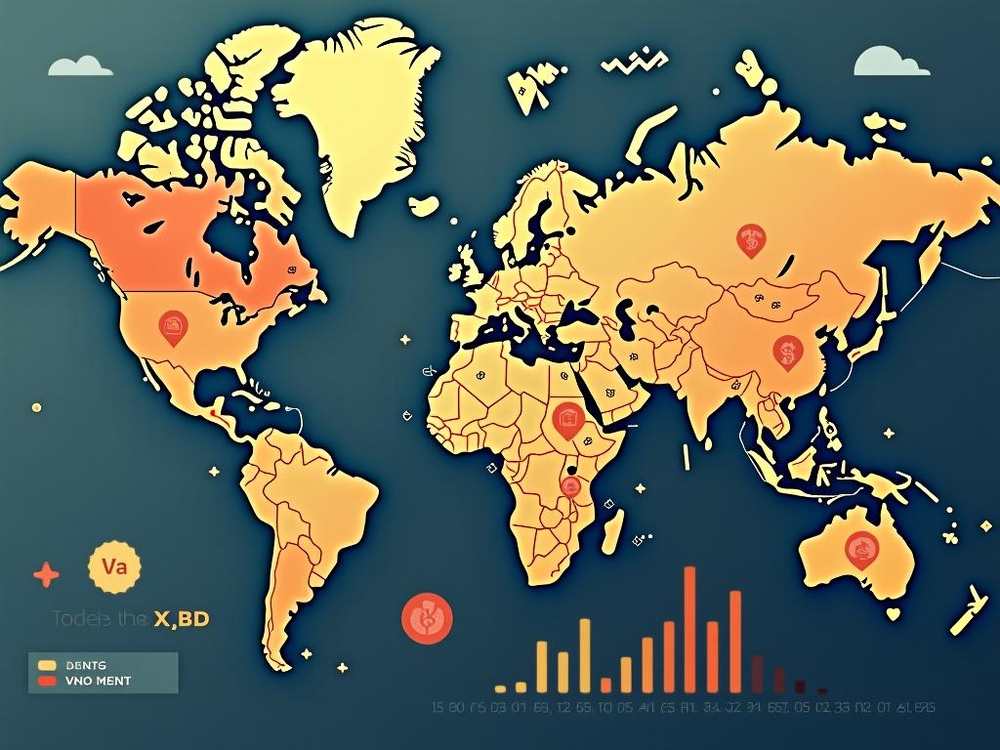Published
- 4 min read
Tariffs, Recession Fears & Market Impact

U.S. stocks slump; recession fears mount amid tariffs uncertainty
Look, folks, here’s the deal. The stock market is throwing us some serious red flags. It’s not the kind of news you want to see, especially on a Monday morning. U.S. stocks are in freefall, continuing last week’s unsettling selloff.
As of 10:15 ET, major indices are taking a hit. The Dow Jones is down 325 points. The S&P 500 drops by 100 points, and the Nasdaq is losing 495 points. These aren’t just figures. They reflect the real worry about our economic future.
Trump declines to rule out recession
President Trump has left people scratching their heads when it comes to the economy. In a recent Fox News interview, he kept things vague about whether we’re heading into a recession. Instead, he talked about this time as a “transition,” saying that his administration’s moves are “very big.”
Recently, the U.S. put 25% tariffs on Mexico and Canada. But then, most goods were exempt for a month. It’s a haze of uncertainty that investors don’t like. It’s like a surprise tax hike when times aren’t great.
China is also in this tariff game. Increased levies there have led to swift retaliation. Moreover, worldwide tariffs will start on April 2, coloring an already uneasy market mood with more doubt.
What are the potential outcomes of current tariffs?
Tariffs can be tricky. They are like a tax on imports, causing those goods to be more expensive. Companies might pass these costs to consumers, leading to higher prices. This situation can hurt consumer spending and slow economic growth.
With tariffs, countries can get into trade wars. These can make global markets jittery, as investors worry about increased cost pressures. If trade tensions don’t ease, companies might hold back on investments, fearing uncertain costs. This scenario isn’t just a financial blip; it could have ripple effects across sectors, especially those relying heavily on international trade.
Key inflation report looms large
We need to keep our eyes on the upcoming consumer price index for February. It’s going to shed light on inflation, a key worry for consumers and policy makers.
February is notable. It’s the first full month since the President returned to office. January’s data showed prices rising at the fastest pace since August 2023. Not the best news for policymakers hoping for stable growth.
Economists expect a slight cool down in the headline figure. From 3.0% to 2.9% year-over-year. Monthly growth might ease from 0.5% to 0.3%. These numbers matter with the Federal Reserve’s meeting coming up in mid-March.
The recent jobs report showed 151,000 new positions in February, a bit lower than expected. Unemployment ticked up to 4.1%. Combine these with upcoming inflation data, and it will shape how the Federal Reserve thinks about interest rates soon.
Tech earnings due
The tech sector is front and center this week. Oracle will lead the charge with its earnings report. There are whispers about their big investment in AI infrastructure with ChatGPT and Japan’s SoftBank.
Reports from Adobe and DocuSign will provide more insight into tech’s performance. Retailers like Dick’s Sporting Goods and Kohl’s could also offer a glimpse into consumer spending, a cornerstone of economic resilience.
Crude edges higher
Oil prices dropped on Monday, building on last week’s record low. Concerns about economic trends drive this pressure, especially with U.S. trade policies in the mix.
Brent futures fell 0.4% to $70.07 per barrel. U.S. West Texas Intermediate futures edged down 0.3% to $66.83 per barrel. In China, deflation continues, adding another layer to the world’s biggest oil importer woes.
As we react to these economic shifts, let’s remember that market volatility fits into a broader economic picture. Handling these challenges requires careful thought and smart policies. Historically, economic uncertainty needs the right mix of fiscal and monetary policies.
Summary
The story is about the current state of U.S. markets, mainly due to tariffs and recession worries. Stocks are down, and the economic direction is uncertain. As tariffs come into play, there’s anxiety about what this means for the market and everyday spending. The inflation report and upcoming tech earnings are crucial for guidance. Next, we’ll look at how these developments may influence policies and strategies domestically and globally. Keep an eye out for responses from other countries and how their strategies compare.